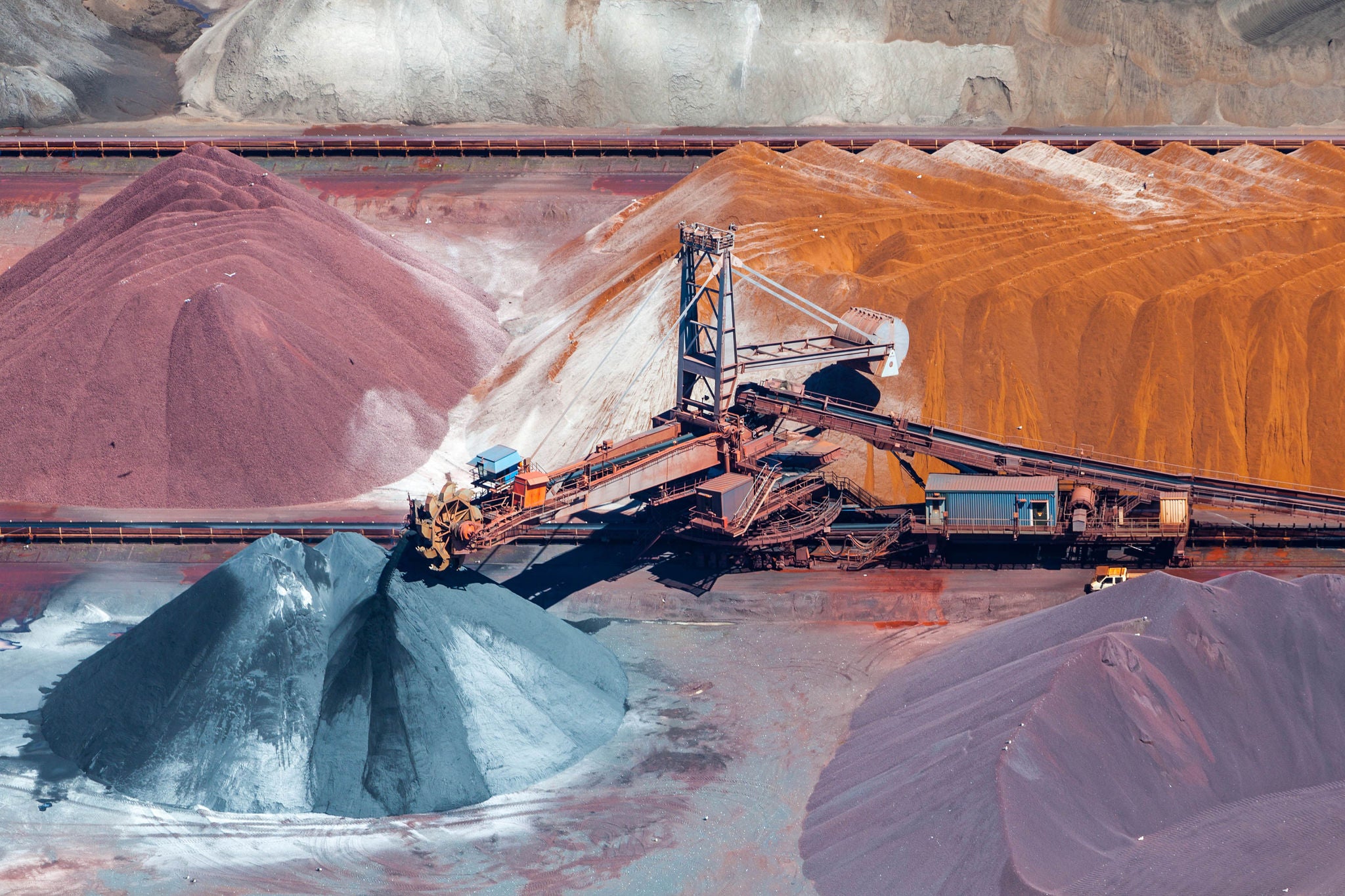EY refers to the global organization, and may refer to one or more, of the member firms of Ernst & Young Global Limited, each of which is a separate legal entity. Ernst & Young Global Limited, a UK company limited by guarantee, does not provide services to clients.

The mining sector is starting to fall behind others, and a significant gap has developed between the leaders and laggards.
In brief
- The mining sector is seeing a decrease in the quality and coverage scores for climate-related financial disclosures.
- Mining companies should respond to consumer and social driven expectations to avoid potential risks to their license to operate.
Analysis of the 2019 EY Global Climate Risk Disclosure Barometer showed that although the mining sector was previously a top performer (when compared with the 2018 analysis), the sector has since seen a marked decrease in the overall quality and coverage of climate-related financial disclosures by companies.
This could partly be explained by the incorporation of companies from additional markets into our analysis, rather than any loss of ground by companies previously covered. For example, new entrants with an overall quality score below 5% were from markets, including Portugal, Argentina, Indonesia, Saudi Arabia, Philippines, Spain, Belgium and Kazakhstan. Coverage and quality scores are awarded by EY to each company as part of the analysis, on the basis of how they addressed or implemented all of the 11 recommendations by the Task Force on Climate-related Financial Disclosures (TCFD).
Within the group of top-performing companies, the high scores can be attributed to strong governance frameworks in the industry, including the Extractive Industries Transparency Initiative and the International Council on Mining and Metals (ICMM) (unlike the energy sector, shareholder resolutions on climate risk disclosures are not widespread).
That said, as global markets become more consumer driven and social expectations increase, participants at all stages of the value chain might have greater expectations placed on them to reduce carbon emissions. If miners don’t respond to these changes accordingly, then the risk to license to operate could be significant. As discussed in the EY report business risks and opportunities in mining and metals 2020, miners are focused on converting to renewable energy and considering mine electrification. Some miners are also electing to change their portfolio of products to reduce their impact on carbon production and greenhouse gases.
The inclusion of additional markets in the 2019 analysis has revealed a significant gap between the leaders and laggards. Almost two-thirds of companies achieved a quality score of less than 32% and over one-third covered only one or two disclosure recommendations. This is in comparison with 15% of companies in the sector, which provided high-quality disclosures across all the recommendations, with an overall quality score of more than 70%. All other companies in this sector achieved a quality score above 32% and below 70%. Leading markets in this sector included Australia, Canada and Brazil. Their success could be attributed to the fact that the largest global mining companies are headquartered in these markets.
EY teams examined how the mining sector performed against the four areas (listed below), through which the TCFD recommendations are structured.
Governance
Almost half of the companies analyzed in the 2019 sample provided no information relating to board oversight or management’s role with regard to climate risk.
Generally, mining companies in developed markets have been long-time reporters to the Carbon Disclosure Project (CDP), with nearly half of the companies assessed reporting to the CDP. For this group of companies, disclosures of board oversight of climate-related risks, as well as management’s role in managing risks and opportunities, were often found in response to specific CDP questions.
The top-performing companies in the sector sample provided extensive details within their annual financial reports. This information included:
- Interactions between the board and management
- The board’s role in the climate risk management process
- How performance against targets was monitored and reflected in senior executive and leadership remuneration, along with the frequency of meetings and interactions
These companies also clearly articulated the management process for monitoring and reviewing current and emerging climate-related issues.
Strategy
Almost half the companies in our sample of the mining sector disclosed climate risks and opportunities; this information was generally included in their CDP responses. The top-performing companies in this sample also set a time frame for each risk or opportunity, and estimated its potential impact and likelihood. Companies who participated in the CDP scored better for the strategy aspect of their disclosures. However, a quarter of companies assessed in the sample provided no information regarding the strategy element in their disclosures.
Three of the top-performing companies evaluated had developed long-term scenarios to test the resilience of their portfolios under various settings. They included a 2⁰C scenario (2DS), aligned with the International Energy Association (IEA) 2DS, which was communicated through a stand-alone climate change report. This was referenced in sustainability and annual financial reports.
Risk management
The mining sector results differ from the general trend observed across other sectors of better disclosures in the areas of governance, and targets and metrics. In this sector, even though the scoring for risk management is slightly lower for both coverage and quality, it is higher than the score for governance, when compared to the scores across all other sectors.
The top 10 companies in the sector sample had thorough disclosures around risk management with quality scores assigned as part of this analysis, of over 80%. This is calculated on the basis of strong reporting of environmental and enterprise risk management processes.
Targets and metrics
The energy-intensive nature of the mining sector means there has been a long-established focus on greenhouse gas (GHG) emissions. This is reflected by the sector’s overall performance with regard to the targets and metrics area of the recommendations, which provide details of Scope 1 and Scope 2 emissions. Almost half of the companies assessed provided data and specified the methodology used to calculate these emissions. The majority of these companies also provided historical data to convey trends in emissions. Although, only the top-performing companies in the sample disclosed data on Scope 3 emissions.
To better understand their exposure to climate-related risk and capitalize on the opportunities of the transition to a lower-carbon economy, it is probable that miners will need to properly account for and eventually reduce their Scope 3 emissions. This will likely mean assessing the markets they sell to and considering the impact of selling to customers who produce substantial emissions in the use of their products. To achieve a reduction in Scope 3 emissions, miners may support or act to move away from carbon-intensive businesses altogether. Given that a miner’s Scope 3 emissions will overlap with their customers’ emissions, strategies to reduce Scope 3 emissions create an opportunity for collaboration, and we have seen some excellent examples of this over the past 12 months.
Despite the initiatives already announced by some miners, collecting and tracking data to determine actual Scope 3 emissions is challenging. Companies may consider the use of technologies such as data analytics, smart sensors and blockchain to help them better understand and manage their Scope 3 emissions, therefore improving environmental footprint and providing a positive contribution to license to operate.
Disclosures in relation to other metrics used to assess climate-related risks and opportunities were not as strong in this sample; however, they did make some references to energy and water. The better-performing companies included the use of an internal carbon price, and some also described how performance metrics had been incorporated into remuneration policies.
Five companies in the sample provided some detail of internally developed targets and reported performance against these targets — a small increase from the previous year’s analysis. Only three other companies assessed mentioned they were considering setting targets to manage climate-related risks and opportunities.
Industry associations could play a key role in driving a low carbon and climate-positive future. The ICMM has its water stewardship, tailings management and mine closure programs for example. Many commodity specific associations are also focused on sustainability initiatives – the International Copper Association for example launched their “Copper Mark” assurance program to bring the industry together to deliver “responsibly produced copper.” Miners can be part of the solution, and their engagement around topics such as climate risks, the circular economy and green mining are all key to this.
Summary
The mining sector has seen a marked decrease in both the quality and coverage of climate-related financial disclosures since the 2018 study. Within the sector, a significant gap has appeared between the leaders and laggards, with two-thirds of companies achieving a quality score of 32%. This is in comparison with 15% of companies, achieving an overall quality score of more than 70%. This article draws on analysis from the 2019 EY Global Climate Risk Disclosure Barometer and provides a snapshot of the mining sector’s uptake of the recommendations by the Task Force on Climate-related Financial Disclosures (TCFD).
How EY can help
-
Supporting organizations with physical and transition risks associated with climate change, and assisting them with market and regulatory changes.
Read more



